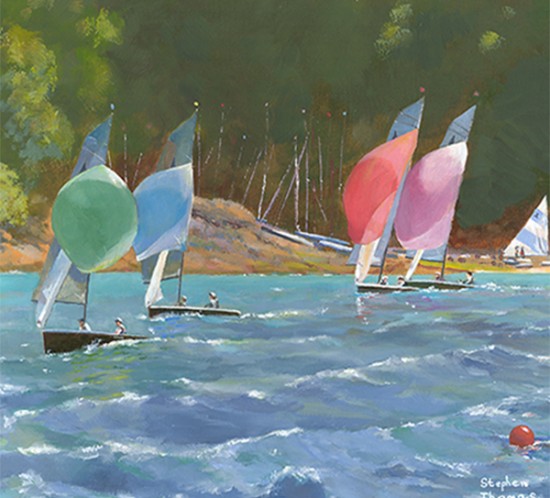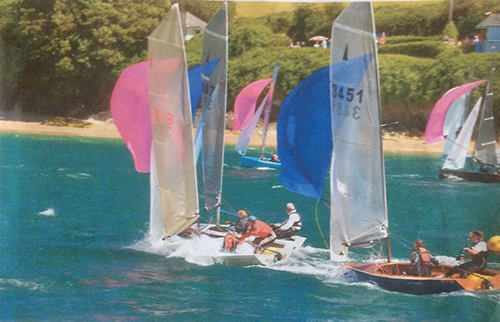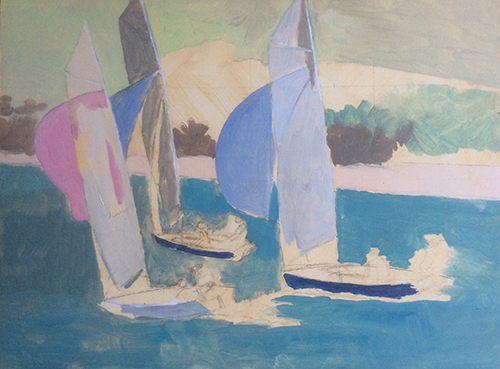SOLD! Reflections at Batson
Reflections at Batson hung above the TV in our lounge during the SHAF Arts Trail last October, and stayed there until this past weekend, when it was sold, during a private viewing.
The history of Reflections at Batson
This painting – number 96 featured above – was completed in the summer of 2014. It was one of four which I’d created ahead of a trip to the photographer who provides the digital images I use for prints and card.
Only last week, Anne and I made the trip to Plymouth with the latest crop of paintings. This time it was six images, all destined for the Salcombe Art Club’s Main Exhibition. More on those in later posts!
Back in 2014, the four paintings –
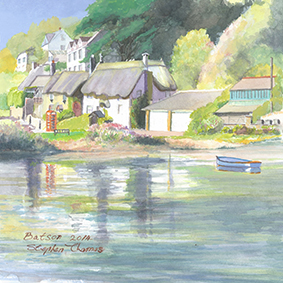
Reflections at Batson
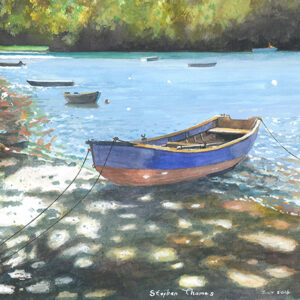
Dapple Light I
Low Tide at the Crabshell Inn and
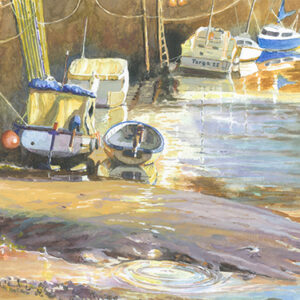
Low tide at the Crabshell Inn
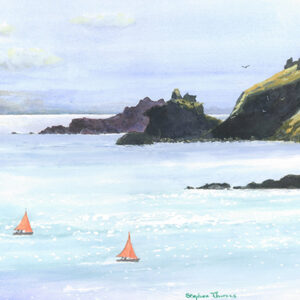
Racing Past Blackstone
– were all watercolours. This year, my crop comprised five oil paintings, one acrylic, but no watercolours. Why no watercolours? Because in March 2014, after three years of traipsing from one rental to another, Anne and I moved into our forever home: Beacon House. Here, I have space, not only to paint, but also to stack my still-wet oils in a large airing cupboard. Prior to that, it only made sense to use watercolour – it dries more quickly.
How many watercolours do I have in stock?
The purchaser of Reflections at Batson specifically asked to see my watercolours. And I only had a very limited number on show.
Of those four watercolours produced in 2014, only Racing Past Blackstone remains unsold, but all four are available as fine art greetings cards – thanks to that trip to the photographer back in 2014.
Like many of my paintings, Reflections at Batson was displayed a number of times before it was sold, for example: in Michael Hill’s Watercolour class exhibition in 2014, in my one-man exhibition in the Little Studio in 2016, and at the Redfern Health Centre in 2017.
Some paintings, though, sell very quickly – within a few days of going on show. And I have to have ‘spares’ ready to hang in their place. Hence the need for six paintings now, even though I can only enter five as a full member of Salcombe Art Club.
What inspired me to paint Reflections at Batson?
If, like me, you walk the short distance from Salcombe to Batson, you’ll see the view that inspired me to try to capture this idyllic setting.
At the top of Batson Creek, a collection of thatched cottages delight the eye. They sit around a triangle of grass complete with its old-fashioned telephone box. (At least, the phone box was there, the last time I visited!) The reflections of these cottages in the water only serve to enhance the tranquility of the scene. Isn’t it beautiful?
The new owner of this painting, I hope, will enjoy this view as much as I do.
Viewings by arrangement
Beacon House is my home and, within it, I hang my stock of paintings in what we call ‘Beacon House Gallery’. It’s actually our hall, stairs and landing! We are not ‘open to the public’ except during the SHAF Arts Trail (13-28 October 2018) but, if you wish for a private viewing, please contact me to arrange a time convenient to us both.


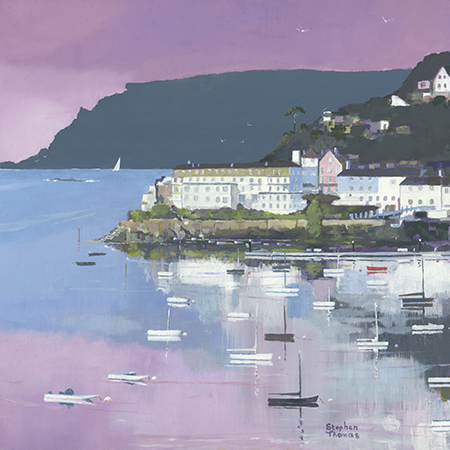
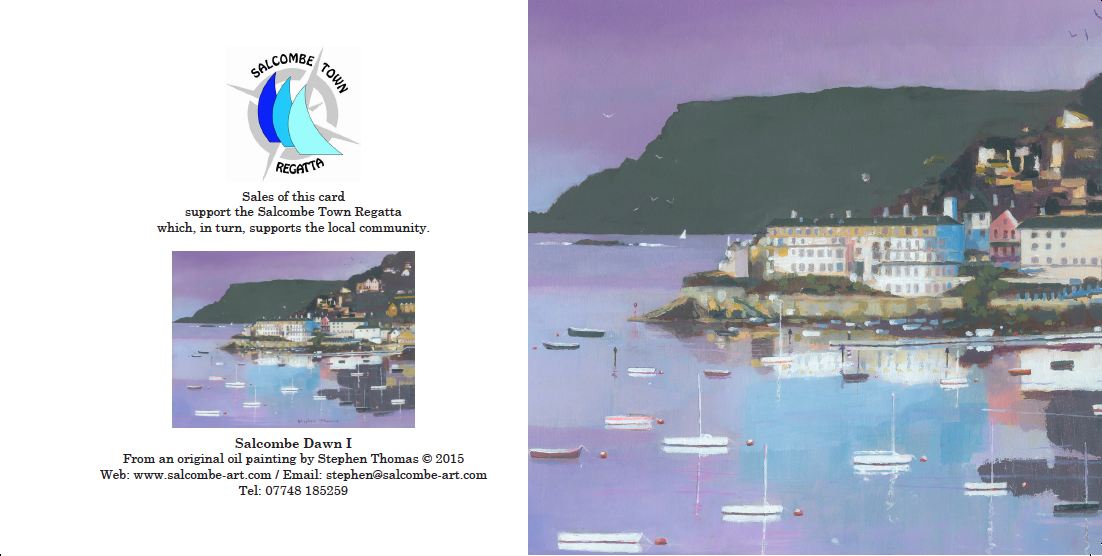
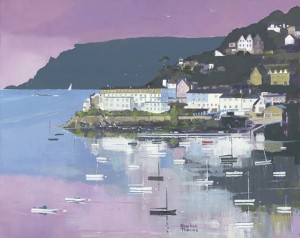
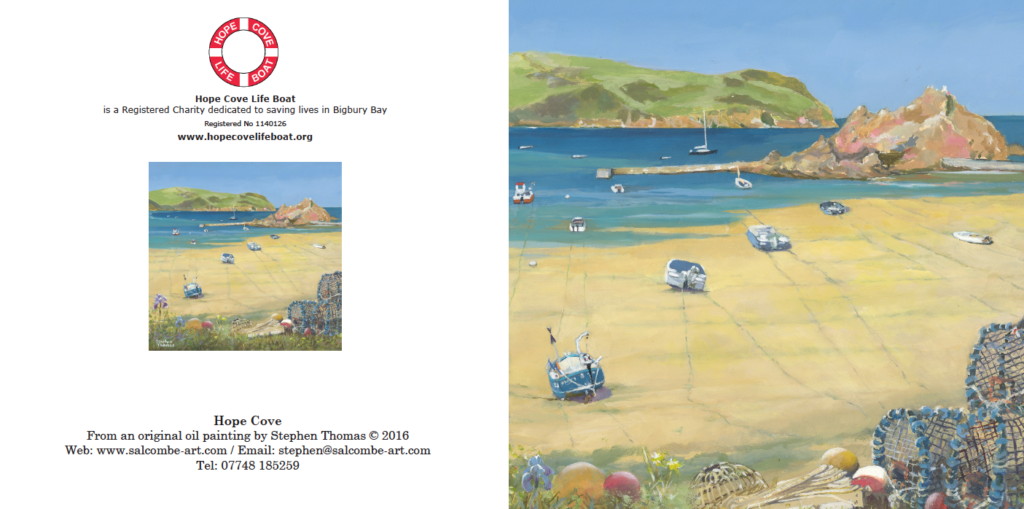 The Hope Cove Charity card is already on sale at the Cottage Hotel, Hope Cove and other outlets.
The Hope Cove Charity card is already on sale at the Cottage Hotel, Hope Cove and other outlets.